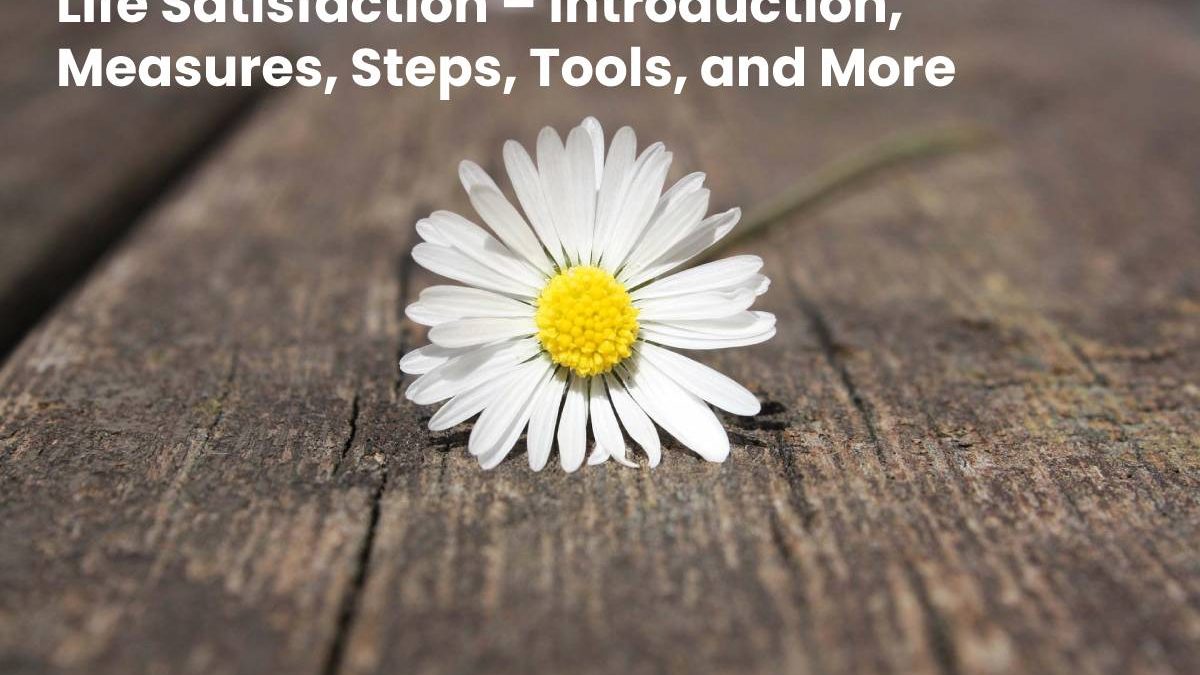Table of Contents
Introduction
Life Satisfaction – The Satisfaction with Life Scale (SWLS) is an instrument used to research the quality of life and psychological well-being. Its use increase significantly in recent years within the social and medical sciences. If you want to know what this methodology consists of and how to apply it in a study. We present everything you need to know beforehand in this article.
What is the Life Satisfaction with Scale (SWLS)?
The Life Satisfaction with Life Scale (SWLS) is a brief 5-item instrument design to measure individuals. global cognitive judgments about satisfaction with their life. Therefore, It is considered the most widely used measure of life satisfaction worldwide.
Life satisfaction is a subjective well-being factor that has at least three components:
- positive affective appraisal
- negative affective appraisal
- Satisfaction with life.
Life satisfaction differs from the affective evaluation (both positive and negative) in that it is more cognitive than emotional.
In general terms, life satisfaction is the personal perception of well-being or happiness, the assessment of life in relation to one’s own goals, expectations, or interests mediated by the cultural context.
How is the Satisfaction with Life Scale Made?
The scale usually requires one to 5 minutes of the respondent’s time to respond through a 7-point Likert rating scale, representing “strongly disagree” and 7 “strongly agree.”
The resulting scores can range from 5 to 35, with higher scores indicating that a person perceives. That the areas of their life that they consider important are doing well, while low scores indicate the opposite.
A common classification of results is as follows:
- 30- 35 Extremely satisfied.
- 25 – 29 Satisfied.
- 20 – 24 Slightly satisfied.
- 15 – 19 Slightly dissatisfied.
- 10 – 14 Dissatisfied.
- 5 – 9 Extremely dissatisfied.
Scores can generally assign to six well-being categories, and interpretive text provides each.
Examples of Life Satisfaction Scale Questions
Some examples of the most common questions included in this instrument are:
- The kind of life I lead resembles the kind of life I always dreamed of leading.
- The conditions of my life are excellent.
- I am satisfied with my life.
- Until now, I have achieved the essential things I want in life.
- If I could live my lifecycle again, I wouldn’t change something.
What is the SWLS used for?

The satisfaction with life scale is a valuable instrument for academic research in social and medical areas and various disciplines. It has shown a high degree of reliability in multiple studies, an appropriate internal consistency between items, correlations between elements, and adequate validity.
Life satisfaction can be explicitly assessed in one life domain (work or family) or as a global measure of life satisfaction. The Satisfaction with Scale SWLS total score is helpful for group comparisons in research or program evaluation.
It is a good tool for clinical purposes to understand which areas of life are important to the individual and the basis for the assessment. Generally, the questions that make up the satisfaction with scale are open to interpretation, making this scale suitable for adults with different backgrounds.
In recent years, numerous validations, psychometric analyses, and studies have developed with this scale worldwide. Its use in the general population of many cultures and various clinical and social subpopulations.
Steps to Apply the Life Satisfaction Scale
Now that you know what the Life Satisfaction Scale (SWLS) is and what its main uses are, we will share the main steps to apply it in research:
1. Selection of Sampling Method
The first step is to choose the sampling method through which the total and the characteristics of the population studied obtain. If you don’t know how to calculate your sample size correctly, check out our free sample calculator.
2. Adaptation of the Instrument
The next step consists of the adaptation of the satisfaction with life scale (SWLS), which may include the translation of the items from English to Spanish, the evaluation of the conceptual equivalence between both, and a work of cultural adaptation that allows making sure that the instrument is clear and understandable to all participants.
3. Application of the Instrument
Once it verifies that the participants understand and comprehend the items. The field research phase continues, which implies the application of the SWLS in the total sample, either individually or in groups.
As previously mentioned, the response options generally range from 1 (totally disagree) to 7 (totally agree), with a minimum total score of 7 (low satisfaction) and a maximum of 35 (high satisfaction).
Before starting this data collection phase. Thus, It is essential to have the signed consent of all the participants and organizations involved in the research.
4. Data Analysis
Finally, the statistical data analysis process is carries out, including descriptive analysis. Analysis of the validity of the internal structure of the SWLS and reliability analysis.
Other tests that can apply to guarantee the reliability of the results are the sample adequacy and the Bartlett sphericity test.
Technological tools to apply the SWLS
Various technological tools apply the satisfaction with life scale (SWLS) effectively and practically, reducing the risk of losing necessary documentation for reasons unrelated to the research.
An example of this is the Questioner platform for online surveys and offline surveys. which has the option of generating questionnaires with a Likert scale and facilitates fieldwork for both researchers and participants.
Conclusion
Suppose you would like to know the usefulness of these tools to apply the satisfaction with life scale (SWLS). In that case, you can start testing it by creating a free account or request more information about all the functions. That you can take advantage of our platform to improve your research processes.
Thus, Satisfaction with life is understood as a personal evaluation of the quality of one ‘s own experiences. Relates to a unique feeling of well-being or happiness since it is the subjective perception about one’s situation in life, based on own goals, expectations

